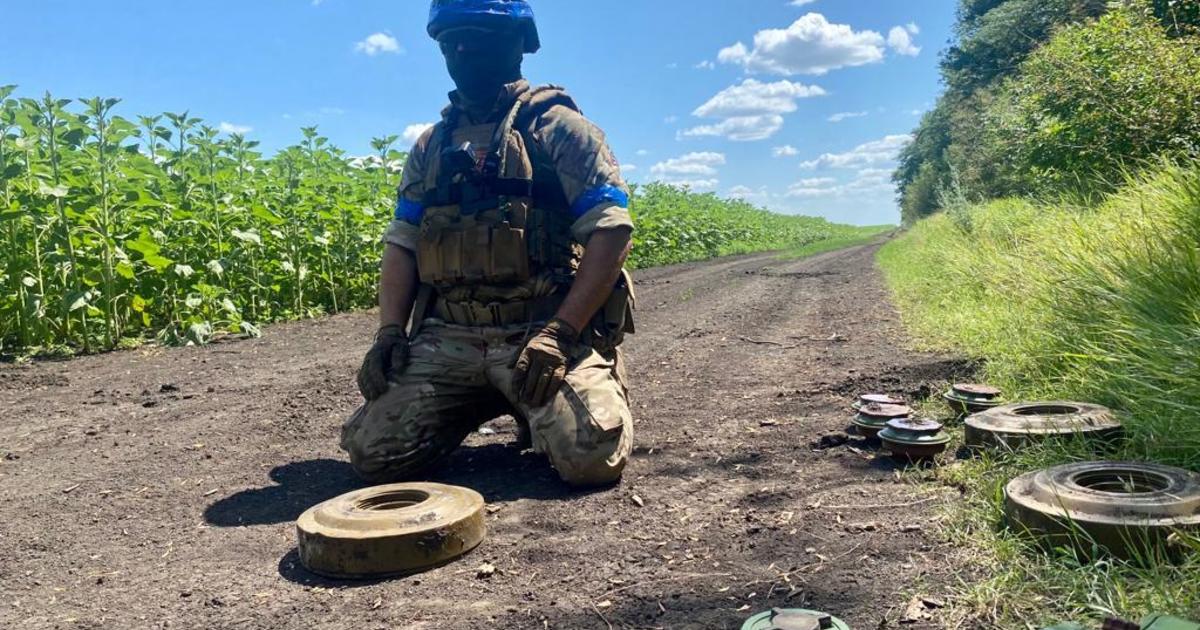Dnipro — Ukraine says its counteroffensive is making slow but steady progress. The Ministry of Defense in Kyiv says more than 11 square miles of territory has been retaken from Russia’s occupying forces over the past week in the south and east of the country.
But that’s slower progress than many had expected. The plodding advance is being blamed on the extent to which Russian forces have managed to dig in and bolster their defensive positions — including through the extensive use of landmines.
The men of Ukraine’s 35th Marine Brigade told CBS News the retreating Russians have laid land mines everywhere, and commanders say they’re the biggest impediment to their weeks-long effort to break through Russian defenses.
The “sappers” of the 35th brigade, as the demining teams are known, gave CBS News a demonstration of how they methodically scour and clear a path just a couple yards wide, gradually widening it out so troops and equipment can move through the minefield.
But even when a path is cleared, the danger can return: Russian forces have been known to fire rockets containing smaller mines, called petal mines or butterfly mines, to effectively re-mine an area that’s been cleared.
Aside from the sheer number of the mines left by Russia’s forces, there are mines of every size and description. Sapper “Mr. Brown,” a callsign, showed us examples — from large anti-tank and anti-personnel mines, to cluster bombs and IED’s — that his unit had found and defused.
CBS News/Agnes Reau
“All of these were removed from the road,” he said. “All were removed from Russian positions. Every single mine is a trophy.”
There are a lot of trophies to recover, for those with the skills to risk it. Mr. Brown said as the Russian forces are pushed back, “they mine everything, with all they have, old and new.”
They even booby-trap tank mines with grenades, so if someone lifts up one of the grenades to remove it, it blows up the larger mine.
Another device they showed us was a mine that springs up out of the ground to a height of about four feet — chest height — and then sprays 2,500 fragments 50 yards in all directions.
CBS News/Agnes Reau
Asked which type scares him the most, Mr. Brown told CBS News it’s a somewhat rare type of device that uses a tripwire trigger.
“If the tripwire is activated, you can die on the spot,” he told us. “Those are the most scary ones. Six of our sappers have lost their legs to it. Because they’re mostly made of plastic, they’re hard for the metal detectors to pick out in a field littered with artillery fragments.”
Using metal detectors is not only dangerous work in a minefield, it’s also painstakingly slow.
What the 35th Brigade would really like is more of the machines that can do the most dangerous work for them, such as the American-made Mine Clearing Line Charge, or MICLICS, which can clear a 100-yard path in one spectacular blow.
Ukrainian troops say equipment like the U.S.-supplied Bradley infantry fighting vehicles, which are built to withstand anti-tank mines, have saved lives on the battlefield. But as soon soldiers step outside the hulking armored vehicles, they’re vulnerable again.
“Odesa,” another soldier’s callsign, told CBS News he lost most of one foot and a few fingers to a mine. But he was back on the job when we found him.
It takes “a lot of training,” he said, “because one wrong step left or right can always be the last one.”
“Where others are scared to go, we go, so that in the future, [others] can get there safely,” said Odesa. “We do this with enthusiasm, and God’s help.”



